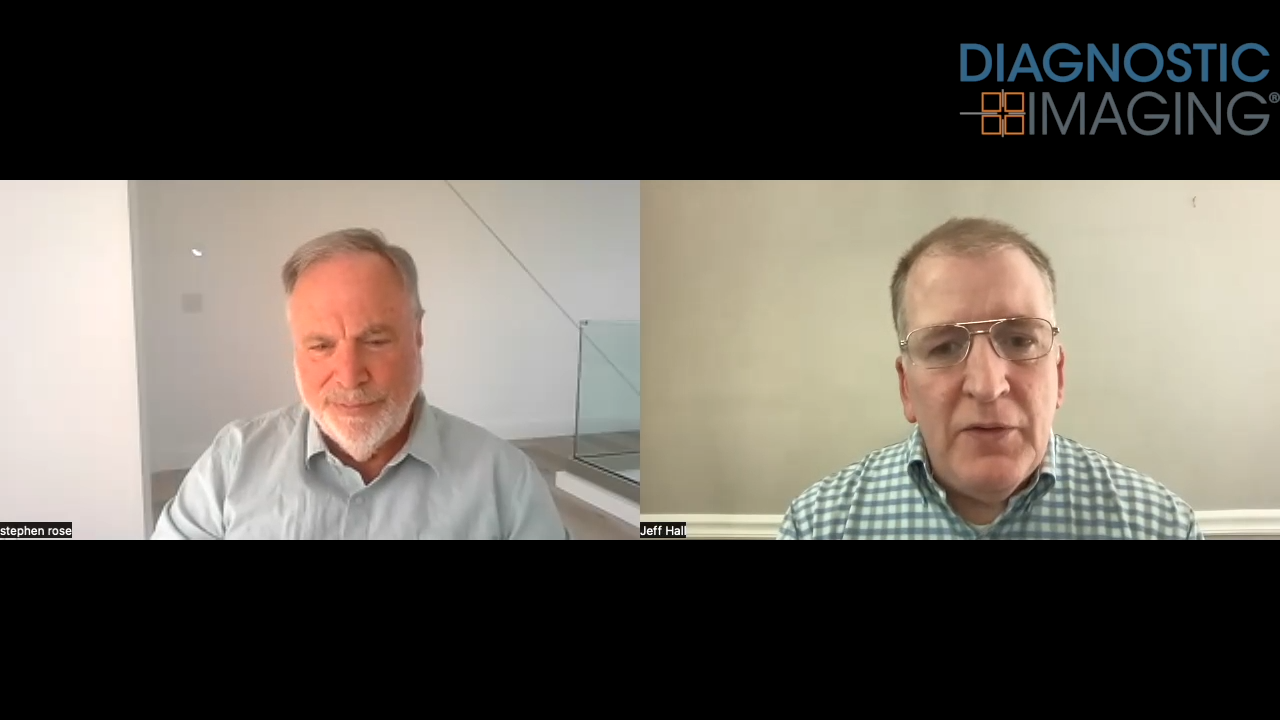TACE plus RFA extends survival in liver cancer patients
Pairing chemoembolization with radiofrequency ablation improved survival in patients with unresectable hepatocellular cancer, according to a multidisciplinary group based at Shangdong University in Jinan, China. Their study results demonstrated how tumor microarchitecture could be manipulated to boost localized therapy.
Pairing chemoembolization with radiofrequency ablation improved survival in patients with unresectable hepatocellular cancer, according to a multidisciplinary group based at Shangdong University in Jinan, China. Their study results demonstrated how tumor microarchitecture could be manipulated to boost localized therapy.
Transcatheter arterial chemoembolization (TACE) slows tumor blood flow while RFA shrinks uninodular tumors, but neither technique by itself offers adequate control for tumors larger than 3 cm, wrote Dr. Bao-Quan Cheng, Ph.D., and colleagues in the Journal of the American Medical Association.
Cheng is from the university's gastroenterology department. Coauthors included Dr. Qing-Liang Wang from the radiology department and Dr. Cui-Hua Yi from the oncology department.
"Because blood flow promotes heat loss and heat loss may reduce the effectiveness of RFA … we hypothesized that if TACE were performed before RFA treatment, the ablation volume of coagulation necroses could be increased (in) patients with larger hepatocellular carcinomas," the authors wrote (2008;299:1669-1677).
Between 2001 and 2004, 291 patients were randomized to receive TACE, RFA, or TACE-RFA. Tumors had to be between 3 cm and 7.5 cm in diameter. TACE was performed using the Seldinger technique of arterial embolization with 50 mg of cisplatin, 10 mL of lipiodol, and gelatin sponge particles. RF energy at an average temperature of 100°C was delivered at doses ranging from five to 10 minutes in duration.
Patients underwent treatment at baseline, two months, and four months. After three courses (one treatment session equaled one course), treatment was continued based on positive findings on CT or ultrasonography. A patient was deemed a nonresponder if the disease was stable or progressed after three courses. Median follow-up time was 28.5 months. The primary end point for the study was survival with treatment response as the secondary end point.
Of the 291 patients, 95 underwent TACE, 100 had RFA, and 96 were treated with TACE-RFA. At follow-up, 80 TACE patients had died versus 84 RFA patients and 66 in the TACE-RFA group.
The median survival time in the TACE-RFA cohort was 37 months versus 24 months for the TACE group and 22 months for the RFA arm. The probability of survival at five years was 31% for TACE-RFA, 13% for TACE and 8% for RFA. In the TACE-RFA group, survival odds increased for patients with lesions larger than 5 cm, the authors said.
Finally, 55% of the TACE-RFA group achieved complete response with a median number of 4.4 treatments. Also, 59% of these patients experienced recurrence versus 81% of the RFA group and 80% of the TACE group.
Fever and pain were common complications in all three arms. Those in the TACE-RFA group also experienced skin burns. Five deaths were considered treatment-related, including two patients with Child-Pugh class A disease who died of liver failure after three courses of TACE-RFA.
The authors concluded that TACE-RFA achieved better ablation than any single treatment method and led to a discernable survival benefit. Patients who are most likely to benefit from TACE-RFA are those with well-preserved liver function and those with three nodules or fewer, they added. They also pointed out that they used a higher power RFA system in order to create 5-cm ablation zones.
The authors acknowledged that the single-center patient population placed a limitation on the results. In an accompanying JAMA editorial, Dr. Andrew Zhu, Ph.D., from Massachusetts General Hospital Cancer Center in Boston, and Dr. Ghassan Abou-Alfa from Memorial Sloan-Kettering Cancer Center in New York, agreed that the results needed to be confirmed at other centers.
However, they praised the study for pointing "toward an important mechanistic possibility - namely that altering the tumor microenvironment and supporting vasculature may help improve the efficacy of localized therapy in this disease," they said (2008;299:1716-1717).
For more information from the Diagnostic Imaging archives:
Report from SIR: fMRI predicts response to treatment for liver cancer
Chinese interventionalists use fresh techniques to improve outcomes
The Reading Room: Racial and Ethnic Minorities, Cancer Screenings, and COVID-19
November 3rd 2020In this podcast episode, Dr. Shalom Kalnicki, from Montefiore and Albert Einstein College of Medicine, discusses the disparities minority patients face with cancer screenings and what can be done to increase access during the pandemic.
What New Research Reveals About Novice Use of AI-Guided Cardiac Ultrasound
April 4th 2025In a study recently presented at the American College of Cardiology (ACC) conference, researchers found that novice use of AI-guided cardiac ultrasound after an AI-enabled electrocardiogram increased the positive predictive value for reduced left ventricular ejection fraction (LVEF) or aortic valve stenosis by 33 percent.










